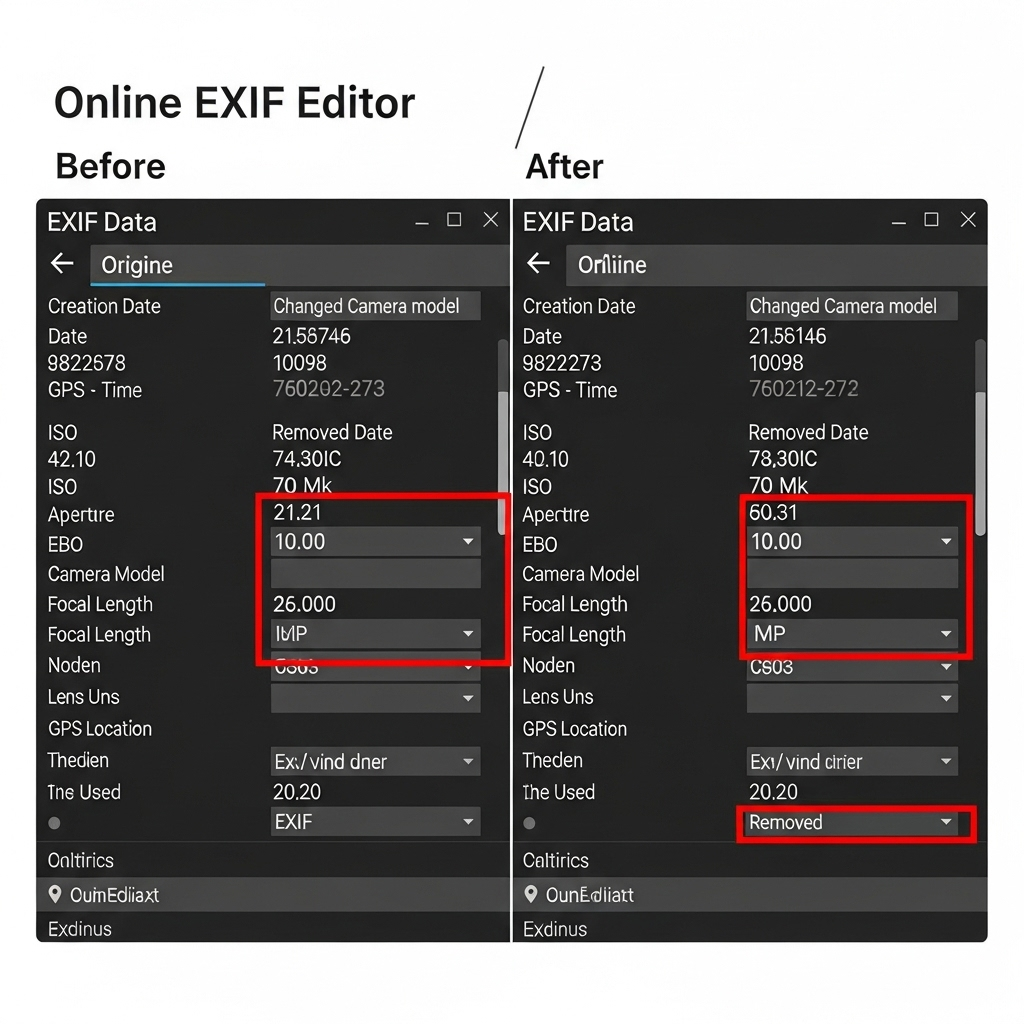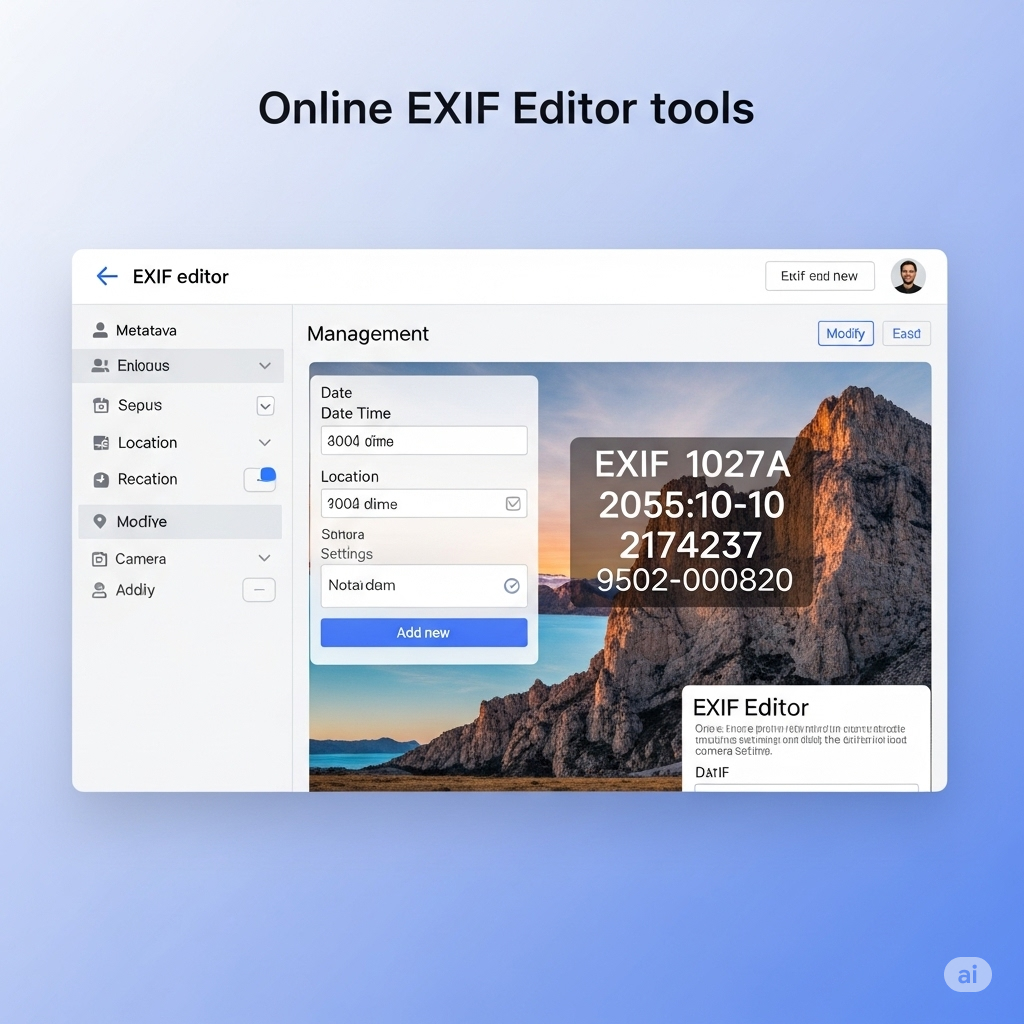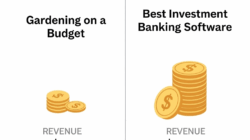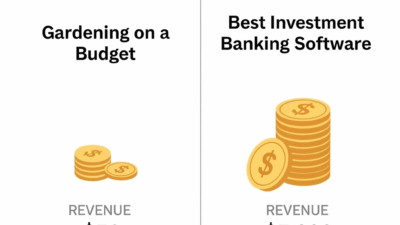Metadata plays a critical role in modern photography and digital media workflows. Whether you’re a professional photographer, a journalist, or a privacy-conscious social media user, understanding and managing your image metadata is essential. This guide takes a deep dive into using an image EXIF editor online, covering what EXIF data is, why it’s necessary, and which online tools deliver the most efficient and secure results.
What is EXIF Data and Why Does It Matter?
EXIF (Exchangeable Image File Format) data is a set of metadata embedded in digital photos. It includes technical information such as camera make and model, shutter speed, aperture, ISO, date and time of capture, GPS location, and even software used during editing.
How EXIF Data Affects Your Photography Workflow
EXIF data helps photographers analyze settings used for each shot, allowing for better learning and performance consistency. For businesses and digital asset managers, EXIF supports cataloging, indexing, and tracking usage. However, for casual users or journalists, the presence of GPS and timestamp data could become a privacy risk when shared online.
Top Benefits of Using an Image EXIF Editor Online
Using an image EXIF editor online offers convenience, accessibility, and control over your media files without requiring software downloads.
No Installation or Technical Skills Required
Online editors allow users to drag and drop images into a web interface. No complex software setup is needed, making them accessible for beginners, marketers, and professionals alike. This also ensures compatibility across devices—whether you’re using Windows, macOS, or mobile platforms.
Metadata Cleaning for Privacy and Security
Removing GPS coordinates, timestamps, or device information helps ensure your photos cannot be traced back to your location or identity. This is especially useful for images shared on social platforms or websites. Tools like [nofollow link to Pixel Privacy’s metadata guide] offer further insight into metadata’s privacy risks.

Best Tools for Image EXIF Editing Online in 2025
Choosing the right image EXIF editor online depends on your needs—whether it’s simple removal, deep metadata editing, or batch processing. Here’s an in-depth look at the top-performing tools.
Arizu Image EXIF Editor
One of the most practical and locally-developed tools available today is the Arizu Image EXIF Editor Online. Designed with a minimalist and responsive interface, this tool allows users to easily view, edit, or remove EXIF metadata directly from their browser without registration. It supports standard image formats like JPG and PNG, and prioritizes user privacy by ensuring all image data is processed on the client side. Arizu is especially useful for content creators, journalists, and photographers in Southeast Asia seeking fast, private, and intuitive EXIF editing capabilities.
Photopea
Photopea is a free, browser-based photo editor that includes powerful EXIF editing. It’s suitable for users who need deeper control over their photos without installing Photoshop. While not exclusively an EXIF editor, its metadata editing capabilities are robust.
Exif.tools
Exif.tools offers a minimalist UI with drag-and-drop features, showing all metadata details at once. You can easily delete, edit, or replace values such as location and camera settings. It supports batch uploads and has a clean privacy policy stating files are not stored on their servers.
IMGonline
One of the oldest platforms, IMGonline allows detailed editing of EXIF, IPTC, and XMP metadata. Though the interface is dated, the toolset is extensive, allowing photographers to simulate different camera settings or update copyright and author info.
Metapicz
Metapicz provides fast previews and editing for common metadata fields. While it’s not as advanced as some tools, it’s perfect for quick tasks and verifying image information before uploading to public platforms like LinkedIn or Pinterest.

How to Use an Image EXIF Editor Online for Privacy Protection
Editing image metadata for privacy involves more than just removing a GPS tag. It includes understanding which fields expose sensitive data and why.
Removing Location and Time Data
GPS coordinates, timestamp, and device ID are the three most common pieces of metadata used to track individuals. These fields are often embedded in photos taken on smartphones or DSLRs with geotagging enabled. Tools like Exif.tools allow you to remove this data with a single click.
Scrubbing Device and Software Information
Some EXIF fields list the exact model of your device and even the software version. If you’re a journalist, activist, or whistleblower, this can compromise your anonymity. Regular cleaning of this data is a best practice, even for casual users.
SEO and Digital Marketing Advantages of EXIF Metadata
Marketers and SEO specialists can strategically use EXIF data to boost content visibility and performance across platforms.
Embedding Keywords in Metadata for Image SEO
While search engines don’t weigh EXIF data heavily, platforms like Google Images sometimes use metadata for indexing purposes. Embedding your brand name, campaign title, or geolocation can improve visibility. You can do this manually using EXIF editors or through automated tools like [nofollow link to Adobe Bridge’s metadata editor].
Attribution and Copyright Protection
Adding your name or business as the creator in the metadata helps maintain proper attribution. This can support copyright claims if your images are reused without permission. Editing tools let you embed custom copyright notices, usage rights, and license types.
Choosing the Right Image EXIF Editor Online: Key Considerations
Every tool has strengths and limitations. Here’s what you should keep in mind when selecting an image EXIF editor online.
Interface and Usability
If you’re a beginner, choose a tool with a user-friendly interface and clear labeling. Tools like Metapicz shine in this area.
File Privacy and Security
Always check the tool’s privacy policy. Ensure the service doesn’t retain or share uploaded images. Prefer editors that clearly state they don’t store any data after the session.
Format Compatibility
Most editors support JPEG, but not all support formats like PNG, WebP, or HEIC. Ensure your chosen editor works with your photo file types.
Final Thoughts: Do You Really Need an Image EXIF Editor Online?
If you share photos online regularly—whether on a blog, social media, or via cloud platforms—then yes, you absolutely need an image EXIF editor online. These tools not only offer peace of mind but also allow greater control over how your images are seen, shared, and used. From enhancing privacy to strengthening brand identity, editing metadata is an underrated but powerful practice in digital asset management.
Evaluate your needs, try a few tools, and incorporate metadata checks into your content publishing workflow. With the right editor, you’ll not only clean your files but also clean up your digital footprint.







